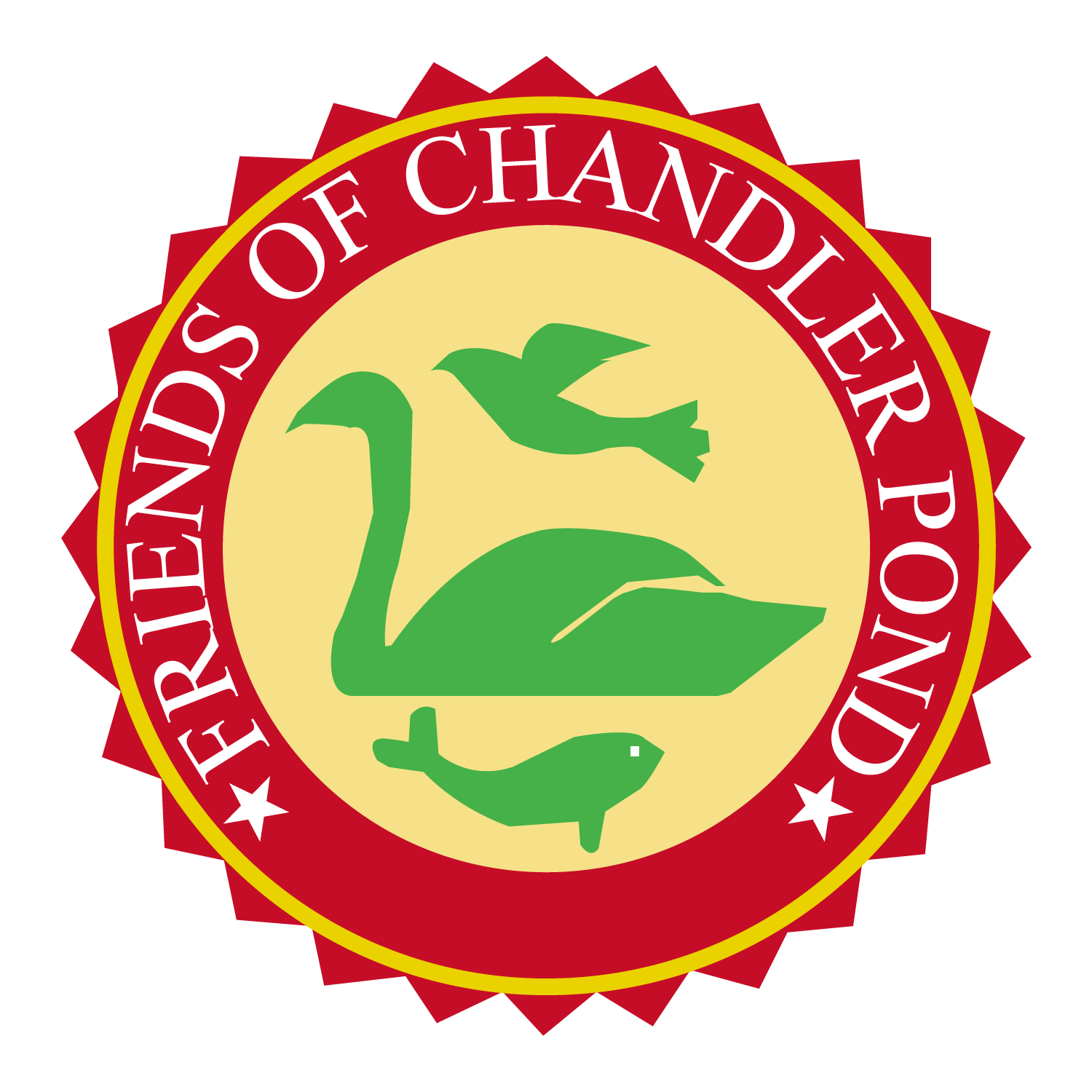by Bill King
Bill King cleaning the inlet on the North West side of the pond
I first noticed the invasive aquatic plant “European naiad” (scientific name Najas minor) in the summer of 2021 while hand and shrub rake harvesting the invasive aquatic plant Eurasian watermilfoil using Steve’s sit-on-top kayak. An advantage of hand harvesting is that one can leave behind the harmless plants. Both invasives produce floating fragments around six inches long: Eurasian watermilfoil grows a long stem up to the surface, but European naiad grows only 1 ½ feet tall from the bottom. From above, it looks like a small round bush, although in shallow water the leaf tips break the surface. I have not yet found it in the deeper waters in the middle of Chandler Pond.
Eurasian watermilfoil is capable of covering the surface and reproduces by fragmentation. It has been in Chandler Pond since 2004, and hand harvesting and chemical treatments (in 2005, 2009, and 2014) are being used to control it.
This invasive was first noticed in 2021 and identified as the invasive European Naiad, also called Najas minor, or brittle bushy pondweed and more names. It reproduces by fragmentation in the summer, is only 1 ½ feet tall, but only the seeds survive the winter. Hand harvesting here has not been sufficient, so chemical treatment may be needed.
By August 29, 2021, the leaves had curled backwards in a very unusual and attractive way, away from their base on the stem where the tiny underwater flowers are. Suddenly I realized, “This plant was not here before the 2020 pandemic lockdown, it is rapidly increasing, and it is so attractive that I would like to take it home to my turtle aquarium: This is likely to be an invasive-released aquarium plant!” It turns out it is.
In 2008, Najas minor was listed as “likely invasive”, and “Importation and propagation/sale prohibited”, and “In Massachusetts, it is only found in Berkshire County.” in the book A Guide to Invasive Plants in Massachusetts, available for only $5 from www.mass.gov/guides/masswildlife-publications. (It is also found in https://www.mass.gov/doc/dcr-guide-to-aquatic-plants-in-massachusetts/download.)
Identification was confirmed by Lisa Kumpf, aquatic biologist at the Charles River Watershed Association, as well as by Jim Straub and Tom Flannery of the Massachusetts Department of Conservation and Recreation, Lakes and Ponds Program. They all said that it has now spread to the Charles River.
Hand harvesting removal of invasive European naiad and Eurasian watermilfoil is usually done with a sit-on-top kayak or a rowboat, chest waders, a brush rake, gloves, and either a bucket or a burlap bag.
Unlike mild Eurasian watermilfoil infestations, this method has not at all kept up with the spread of European naiad.
Najas minor seems to have a short growing season. Last year I could not find it on May 31, but did find it on June 14. It reproduces by fragmentation in the summer, but only the seeds survive the winter. In fact, when Jen (one of our volunteers) joined me in kayaks on October 30, 2022 in order to learn to identify and remove it and Eurasian watermilfoil, there was no sign of Najas minor.
Nick Long, the recent assistant to Paul Sutton in the Urban Wilds Initiative of the Boston Parks and Recreation Dept, took a tour with me in Frank’s rowboat on August 22, 2022. I showed him how heavy the Najas minor had become in the shallow water along much of the Western shore, even in areas where it had been cleared before with shrub rakes and hand pulling. Thus, hand harvesting has not been sufficient, so a chemical herbicide treatment may be needed later.
European Naiad on rake and near surface. This was was taken near the flagpole on Sept.17. Note the curved back leaves, which were straight and brush-like earlier in the season. Photo by Dexter Vanzile.
A chemical herbicide treatment was last applied for Eurasian watermilfoil in Chandler Pond in 2014. In 2021 Solitude Lake Management treated upstream in the Newton Commonwealth Golf Course. Najas minor has not reached the golf course waters per the follow up surveys after their chemical treatment. Neither Nick Monllos, Vidhya, or myself have ever seen it on the filtering screen at the inlet to Chandler Pond (near Kenrick St.).
It may be necessary to apply a chemical herbicide and Boston Parks and Rec. is looking into doing a plant survey in Chandler Pond this summer. Nick Long said, “Regular baseline water quality testing would help us understand how to care for the pond in general and what to prioritize in current and future ecological restoration work.”






